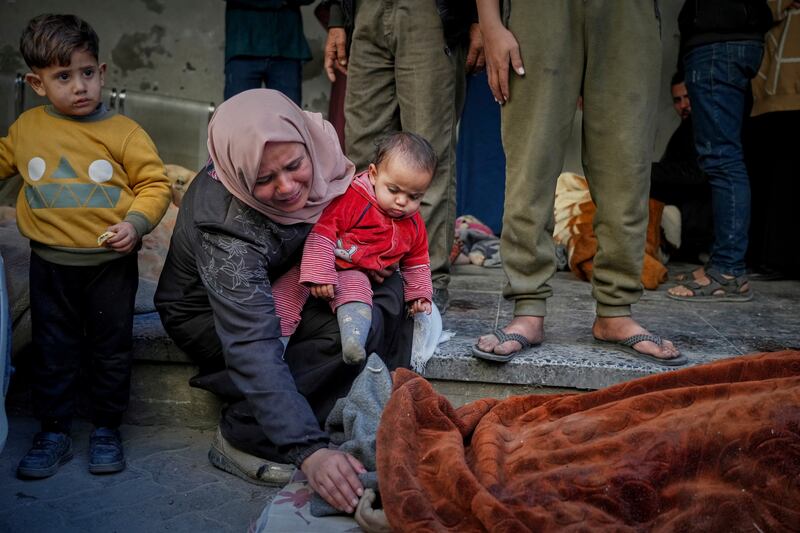- Israel launched missiles against Gaza early Tuesday, the first military action in the areas since the ceasefire began in January.
- The strikes killed around 400 people and made Tuesday one of the most deadly days of the war which started in October 2023.
- Israel says the launched the missiles because of Hamas' refusal to release hostages before negotiations to end the war continue.
After a nearly two-month ceasefire, fighting resumed between Israel and Hamas after Israel launched missile strikes on Gaza, reportedly killing the top Hamas government official and senior military leaders.
The Israeli Defense Forces and the Israel Security Agency said in a joint statement that Essam al-Da’alis, “the most senior figure of authority in the Gaza Strip,” was killed in the strikes, according to Fox News.
Gaza’s Health Ministry, which is run by Hamas, said the strikes killed hundreds of people, and wounded hundreds more, making Tuesday one of the deadliest days of the war, according to The Associated Press.
The war, which started in October 2023, has killed thousands of people and displaced around 90% of Gaza’s population.
There are still 56 hostages being held by Hamas in Gaza with fewer than half of them believed to be alive, according to CNN.
Israelis were angered after Hamas staged elaborate ceremonies as they released living and dead hostages, including the bodies of the two youngest hostages, Ariel and Kfir Bibas, who were reportedly violently killed by their captors, and the body of their mother. Hamas also released videos of living hostages watching other hostages being released, as they pleaded to be let go.
Tuesday’s missile strikes were the first major strikes on Gaza since Israel and Hamas agreed to a ceasefire in January, and raise the possibility of a full return to war, according to The New York Times.
Why did the ceasefire break down?
Israel’s strikes against Gaza on Tuesday were supported by the U.S. government, according to The New York Times. Both governments blame the return to hostilities on Hamas refusing to release more Israeli hostages before the continuation of negotiations to end the war.
Israeli Prime Minister Benjamin Netanyahu said that he ordered the strikes due to a lack in progress in extending the ceasefire, and because Hamas has refused to release additional hostages. According to the AP, Israel has accused Hamas of preparing for new attacks, which Hamas denies.

Mediators have been working to end the war, but Israeli leaders have insisted Hamas can no longer run Gaza after the war.
Israel has indicated it could be soon launching renewed ground operations, by ordering evacuations in parts of northern and eastern Gaza.
“From now on, Israel will act against Hamas with increasing military strength,” Netanyahu said, according to The New York Times.
Hamas' response
A statement from Hamas accused Israel of trying to “overturn the ceasefire agreement, exposing the prisoners in Gaza to an unknown fate,” per The New York Times.
Hamas hasn’t yet responded militarily to the attacks, now Israeli and U.S. leaders are waiting to see if Hamas will escalate or return to negotiations.
The Iran-backed Houthis fired a missile at Israel on Tuesday, triggering warning sirens. It was shot down by the Israeli military, according to The Jerusalem Post.
The state of the ceasefire deal
The ceasefire began on Jan. 19, with a plan for multiple phases, according to CNN. The first phase was supposed to last 42 days.
The terms of the second phase would require Hamas to release all living hostages and for Israel to withdraw from Gaza entirely.

While Hamas wants to stick to the original terms, Israel has made it clear that it wants new terms, per CNN. Israel wanted Hamas to release all the hostages in exchange for Palestinian prisoners, without a commitment to end the war or remove its military from Gaza.
Steve Witkoff, U.S. Middle East envoy, recently proposed a monthlong extension of the ceasefire, lasting through Ramadan and Passover, but the extension included none of the commitments originally made in January. This plan was rejected by Hamas, according to CNN.


